Why Can't You Smile At The DMV? How Your Photo Is Used Without Your Knowledge
The news that Ohio has joined a majority of other states in silently using facial recognition to make drivers “suspects” without their knowledge has been in the news for the past day or so. My first impulse was to write an incendiary tract where I compared my current home state to Soviet Russia in a manner that would be favorable to Soviet Russia. In the interest of balance, however, I reached out to someone with a deeper personal knowledge on the issue to provide a more dispassionate viewpoint. We’ve honored the writer’s request, and made this an anonymous contribution —- JB
The dreaded/joyful day has arrived when your teenaged son or daughter has passed the requisite tests, and it is time to smile for the camera and proudly receive that plastic card that legally empowers him or her to drive the mean streets of your neighborhood. You’ve already warned the neighbors, and they have dutifully moved everything mobile away from the curb. The mailboxes may suffer, but what can be done? Your excited child lines up exactly where he is told (you’re shocked to see that yes, he can still respond to simple instructions), in front of the appropriately colored cloth hanging on the wall, and flashes the happiest (only?) smile you’ve seen in years, proudly showing off the thousands of dollars you spent on orthodontia. The irritated DMV worker snaps, “YOU CAN’T SMILE!!!!”* Your child’s face turns to mild annoyance, and SNAP, the somewhat puzzled look is captured for what is probably “all time” in this day and age of the “cloud”. Why are the evil DMV people raining on your kid’s parade, making driver’s license photos even more hideous than seems necessary? It’s all in the name of facial recognition.
These days in most states, in going to the DMV to get a driving permit or license (or even a state ID card for those curious non-driver types), you are not just receiving the legal authority to operate a motor vehicle and accidentally registering to vote, you are ( in a majority of states) consenting to the submission of your photo to a database which can – and make no mistake, will, as allowed by state law – be searched for a variety of purposes, from identity fraud (which has been proven successful in multiple states across the nation) to searching for criminals whose identity is unknown. The use of facial recognition has been pretty big news over the past year (Boston bombing, anyone?), at least to those who pay attention to such things.
It made a huge splash over the past few weeks in Ohio. The article is a bit long, but worth the read if you care about privacy and what the government can do with your DMV photo. Also if you want a primer on how NOT to launch government use of a new, somewhat creepy, technology on an unsuspecting public, especially in a postSnowden world. And if you love reading the following arguments: “But everyone else is doing it!!!!” and “It’s going to catch bad people.” But I digress. So what is the fuss all about? If you haven’t done anything wrong, aren’t you supposed to have nothing to fear? Maybe. Maybe not.
Automated face recognition is not a “lights-out” or “positive identification” system. The result of the search doesn’t say “this is the guy, go arrest him!”, which may or may not be of any comfort. Essentially, this is what happens (prepare for horrible over-simplification – if you want the in-depth technical treatment, use the internet): your face image – your high cheekbones, the distance between your perfectly set eyes, the position of the corners of your mouth, and your Roman nose is converted into a string of 1s and 0s. When a photo is submitted to a facial recognition system for searching, that photo is likewise converted into a numerical representation. An algorithm then compares the1s and 0s of the submitted photo to the number generated to represent the cheekbones, eyes, mouth, and nose of every other individual found in the database. It isn’t image comparison, it is math; the world of cliched Ph.D.s, not mugshot line-ups of old. When it is done working its “magic”, the result is a list of photos of people who “could be the guy”.
If your perp is a (pick a race) (pick a gender), (pick an age range), the list of 10 (or 20, or 50; the number is based on variable settings which might be the “top ##” matches or a percentage threshold) could be made up of 10 people who don’t “look” like the perp – ethnicity, age, even gender could be “wrong”. (Years ago when a “celebrity doppleganger” facial recognition app was making the rounds, before I knew anything about how this stuff works, I was shocked to find the top results looked nothing like me, including wrong race and gender. The algorithms have gotten better, but it’s still math. And it’s still confused by glasses. And beards. And hats.) Once the list is provided, someone decides whether any of them might be the perp. That person may be trained in facial comparison and identification, or she could be a local cop who has received no training. In any case, law enforcement (or the DMV or any other authorized user) with the right equipment and the right access can submit a photo of someone who is not you, and (based on math) receive your driver’s license and personal information about you as a “this might be the guy” candidate. As a result of this, depending on agency rules/state laws, your photo – which you thought at the time it was taken was for that whole driving thing – could end up as part of a criminal investigation. Your information – name, date of birth, address, perhaps still in some states your social security number – might be sitting in some investigative file, or may even be uploaded into a law enforcement database. Of course there are supposed to be rules in place which protect our privacy by governing how all this information is accessed and used, but as we see from Ohio, sometimes the technological cart finds itself in front of the legal/policy horse.
When law enforcement argues that they aren’t doing anything “different” with facial recognition and DMV photos, they are right. And they’re wrong. There is something that feels decidedly different, and uncomfortable, about having our faces searched, particularly when nothing else is known about us to the searchers. When we HAVE to provide our likeness in order to do something which is so basic in our society it feels like a “right”. About the idea that our photo could be taken while we participate in a protest or a political rally, fully within our First Amendment rights, and even though there are (supposed to be) rules in place to prevent it, that photo could be run against a database, and because we drive, our identity is discovered, our anonymity dissolved. In a world where there seem to be cameras everywhere (and don’t believe everything you read – we’re not to Minority Report or Jason Bourne-type surveillance land, either technologically or legally…yet), where federal law allows your driver’s license information to be used for a shocking variety of purposes beyond even law enforcement (photos are, at least in some states, more protected from disclosure than the other information), facial recognition technology keeps marching on, and the “if it catches bad guys, it must be okay” mantra constantly clashes with the Constitution – and sometimes wins, our collective and individual feelings about privacy are, at best, conflicted. If we want to drive a motor vehicle, in most of these United States, we are consenting to the use of our image for law enforcement purposes. And somehow, that just doesn’t feel right, especially when we don’t know such uses exist.
So what is the truth to be found here about cars? If you drive one, chances are your face – and all the information attached to your driver’s license – is fair game for a technology that is new and not yet at the point where it can make perfect identity determinations. For some people this is totally unnerving. For others, it brings no discomfort. This information is not provided to tell you what to think about the issue, as reasonable minds can and do differ, but simply to make you aware that your license is not just a license to drive…in reality, in a majority of states, it is a license to allow law enforcement agencies to consider whether you are a suspect in a crime to which you have no connection, based solely on a mathematical interpretation of the structure of your face. A consideration which would never have occurred without your love and (probably actual, not simply transcendental) need for cars.
*So why can’t you smile at the DMV? (Not that most DMV experiences lead to smiles.) Smiling, and other non-neutral facial expressions, make automated facial recognition more difficult. It’s the same reason sunglasses aren’t allowed, and head coverings are prohibited unless worn for religious or medical purposes.
More by Ur-Turn
Latest Car Reviews
Read moreLatest Product Reviews
Read moreRecent Comments
- Spectator Wild to me the US sent like $100B overseas for other peoples wars while we clammer over .1% of that money being used to promote EVs in our country.
- Spectator got a pic of that 27 inch screen? That sounds massive!
- MaintenanceCosts "And with ANY car, always budget for maintenance."The question is whether you have to budget a thousand bucks (or euro) a year, or a quarter of your income.
- FreedMike The NASCAR race was a dandy. That finish…
- EBFlex It’s ironic that the typical low IQ big government simps are all over this yet we’re completely silent when oil companies took massive losses during Covid. Funny how that’s fine but profits aren’t. These people have no idea how business works.
















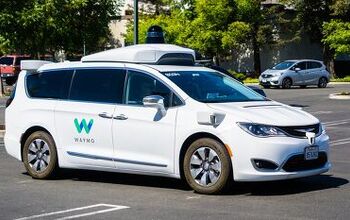
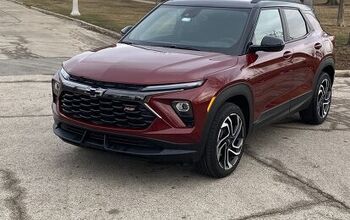
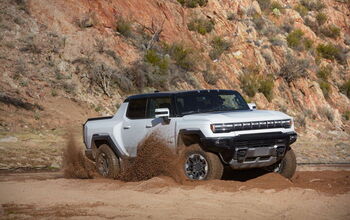


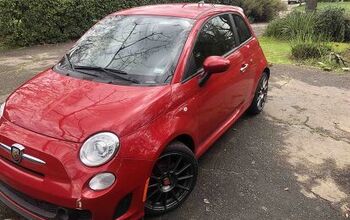
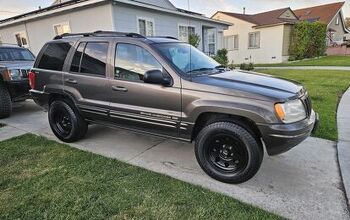

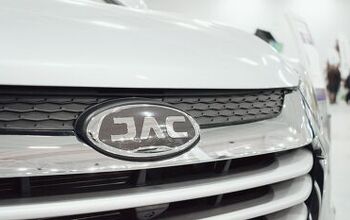
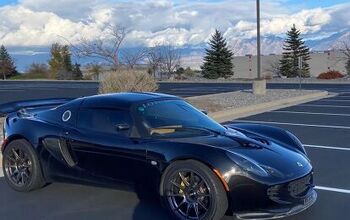








Comments
Join the conversation
I totally get the whole civil-liberties thing when the census people (at least here in Canada) bang on your front door and want to know your ethnic background for the government's records. I can think of quite a few scary uses for this sort of information, and besides that it's none of their damn business. I can also understand how the Big Brother technology bothers people. I read 1984, in 1983 as a matter of fact. Although it is true that the technology is not fundamentally different from a police officer who observes people in public and recognizes a face, it is nonetheless creepy in its efficiency and omnipresence. Who really wants to live like that? Where civil libertarians start sounding like anarchist brats, however, is when they argue for the right to run around anonymously in public places with a 3,000 pound weapon. To them I say sorry, but my children share those spaces and their right to safety is more important than your right to privacy. Wanna be a secret agent? Then walk, take the bus, or stay on your own private property. Go nuts. But when blasting through public spaces in a car you have to think about the rights of others, and not just your own.
Cliff's notes: Your photograph is entered into a database; some perp does something bad on camera, facial recognition sw matches perp's face with "likely suspects" list on DL database. End result: steroid-pumped, hyper-militarized SWAT team in MRAPV knocks down your door at two a.m., kills your dog, then you. Win-win. (Almost. But first, the Second Amendment is to be repealed).